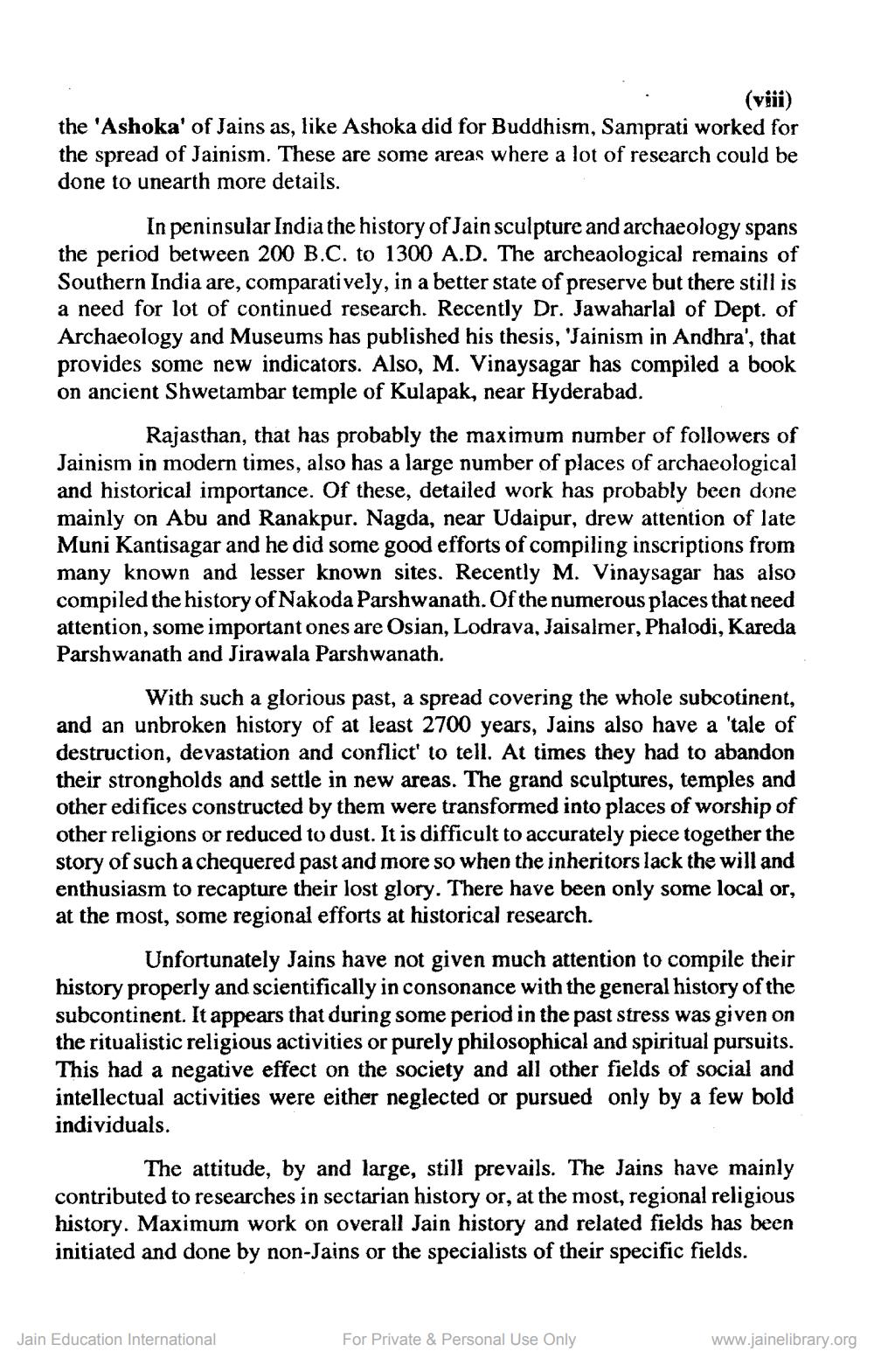________________
(viii) the 'Ashoka' of Jains as, like Ashoka did for Buddhism, Samprati worked for the spread of Jainism. These are some areas where a lot of research could be done to unearth more details.
In peninsular India the history of Jain sculpture and archaeology spans the period between 200 B.C. to 1300 A.D. The archeaological remains of Southern India are, comparatively, in a better state of preserve but there still is a need for lot of continued research. Recently Dr. Jawaharlal of Dept. of Archaeology and Museums has published his thesis, 'Jainism in Andhra', that provides some new indicators. Also, M. Vinaysagar has compiled a book on ancient Shwetambar temple of Kulapak, near Hyderabad.
Rajasthan, that has probably the maximum number of followers of Jainism in modern times, also has a large number of places of archaeological and historical importance. Of these, detailed work has probably been done mainly on Abu and Ranakpur. Nagda, near Udaipur, drew attention of late Muni Kantisagar and he did some good efforts of compiling inscriptions from many known and lesser known sites. Recently M. Vinaysagar has also compiled the history of Nakoda Parshwanath. Of the numerous places that need attention, some important ones are Osian, Lodrava, Jaisalmer, Phalodi, Kareda Parshwanath and Jirawala Parshwanath.
With such a glorious past, a spread covering the whole subcotinent, and an unbroken history of at least 2700 years, Jains also have a 'tale of destruction, devastation and conflict' to tell. At times they had to abandon their strongholds and settle in new areas. The grand sculptures, temples and other edifices constructed by them were transformed into places of w other religions or reduced to dust. It is difficult to accurately piece together the story of such a chequered past and more so when the inheritors lack the will and enthusiasm to recapture their lost glory. There have been only some local or, at the most, some regional efforts at historical research.
Unfortunately Jains have not given much attention to compile their history properly and scientifically in consonance with the general history of the subcontinent. It appears that during some period in the past stress was given on the ritualistic religious activities or purely philosophical and spiritual pursuits. This had a negative effect on the society and all other fields of social and intellectual activities were either neglected or pursued only by a few bold individuals.
The attitude, by and large, still prevails. The Jains have mainly contributed to researches in sectarian history or, at the most, regional religious history. Maximum work on overall Jain history and related fields has been initiated and done by non-Jains or the specialists of their specific fields.
Jain Education International
For Private & Personal Use Only
www.jainelibrary.org




